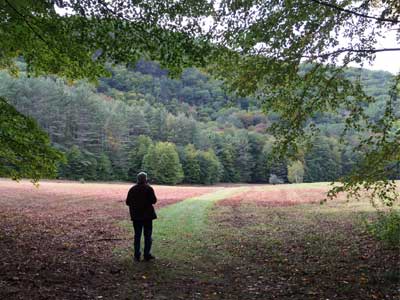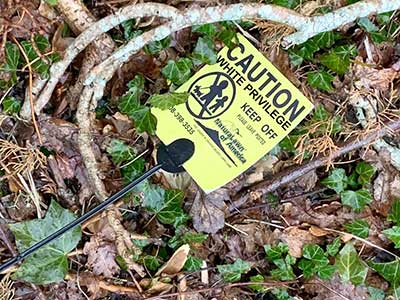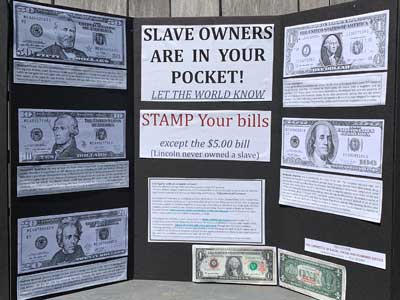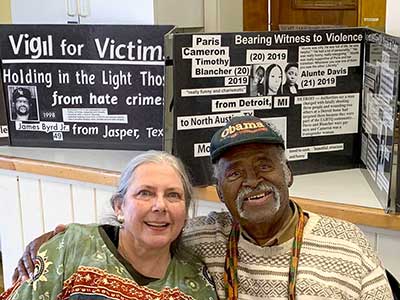by Simon J. Levien | March 2021
When J. Max Bond Jr. ’55 entered Harvard at the age of 16, he was among 15 Black students in his class, most of whom lived in the north corner of Harvard Yard. As his freshman spring semester began, two other Harvard freshmen erected a wooden cross facing that corner of the Yard, formed by Stoughton and Holworthy Halls. And around midnight on Feb. 5, 1952, the students lit the cross on fire… Post-Harvard, Bond became one of a few prominent Black architects in the 20th century. After his death in 2009, his widow, Jean Carey Bond, released an 11-page retelling of his life. In it, Jean reveals that the University threatened Bond or any Black student with suspension should they go to the media with the cross burning. Bond, who graduated Phi Beta Kappa and finished undergrad in three years, was never suspended.
TAGS: [Racial Terrorism] [2020’s] [Systemic Racism] [Silencing POC] [White Supremacy] [White Culture] [White Privilege] [White Defensiveness] [History] [Slavery] [Denial] [Social Justice]
by Dana Hedgpeth | March 2021
More than 180 years ago, the federal government launched the largest effort of its kind in the United States to vaccinate Native Americans against the deadly disease of smallpox… In 1832, Congress passed legislation — the Indian Vaccination Act — that allowed the federal government to use about $17,000 to hire doctors to vaccinate Native Americans who were living near White frontier settlements. Many White settlers feared that Indians would spread the disease to them. “It wasn’t in the interest of Indian people,” said Pecos, who is also co-director of the Leadership Institute at the Santa Fe Indian School. “It was a way of vaccinating them to move them so White Americans could move them into Western lands.”
TAGS: [Strategies] [2020’s] [Indigenous] [Health Disparities] [Politics] [Social Justice] [Systemic Racism] [Racial Terrorism] [Definitions] [White Supremacy] [White Culture] [White Privilege] [Silencing POC] [History]
by Acee Agoyo | April 2021
Five years since the fight against the Dakota Access Pipeline became a worldwide movement, and four years after tribes and their allies took to the streets in protest, Lakota youth returned to the nation’s capital to once again hold the federal government to its trust and treaty responsibilities. Youth from the Standing Rock Sioux Tribe, the Cheyenne River Sioux Tribe and the Lower Brule Sioux Tribe traveled over 1,500 miles from their communities to make a simple yet pointed request. Shut down the Dakota Access Pipeline, which the federal courts have repeatedly determined was approved under a process that violated the law.
TAGS: [Collective Action] [2020’s] [Indigenous] [POC Climate Action] [Environment] [Politics] [Social Justice] [Justice System] [Systemic Racism] [Advocacy] [Role Model]
by Brando Simeo Starkey | May 2017
A few years ago, I read slave narratives to explore the lives of black agricultural workers after the end of the Civil War. The narratives came from the Federal Writers Project of the Works Progress Administration, a program that employed researchers from 1936 to 1938 to interview former enslaved people, producing more than 2,300 narratives that, thankfully, reside online and are fully searchable.
TAGS: [Collective Action] [2010’s] [Slavery] [Civil War] [White Supremacy] [White Culture] [White Privilege] [Systemic Racism] [Definitions]
by Brian S. Feldman | May 2017
The last thirty years also have brought the wholesale collapse of black-owned independent businesses and financial institutions that once anchored black communities across the country. In 1985, sixty black-owned banks were providing financial services to their communities; today, just twenty-three remain. In eleven states that headquartered black-owned banks in 1994, not a single one is still in business. Of the fifty black-owned insurance companies that operated during the 1980s, today just two remain. Over the same period, tens of thousands of black-owned retail establishments and local service companies also have disappeared, having gone out of business or been acquired by larger companies. Reflecting these developments, working-age black Americans have become far less likely to be their own boss than in the 1990s.
TAGS: [Strategies] [2010’s] [Art & Culture] [Justice System] [History] [Economics] [Systemic Racism] [Black Lives Matter] [Social Justice] [Politics] [Slavery] [Civil War] [White Supremacy] [White Privilege] [Racial Covenants] [Racial Terrorism]
(posted) by Paula M. Fitzgibbons | Date Unknown
Black history month is about so much more than slavery, but in the U.S., Black history and slavery are inseparable. And sadly, many of us still don’t have an adequate education on the topic. I’m always flabbergasted when I hear people say that Black Americans need to “get past” slavery. “It wasn’t us,” they say. “That happened hundreds of years ago. Get over it already.” It’s clear to me that these people don’t fully grasp the horror of American slavery, how long it lasted, and what happened after it. They also don’t seem to understand how severe trauma works.
TAGS: [Collective Action] [Slavery] [Black Lives Matter] [Systemic Racism] [White Fragility/Tears] [White Culture] [White Privilege] [White Defensiveness] [White Blindness] [Social Justice] [Racial Terrorism] [Silencing POC] [History] [Denial]

















